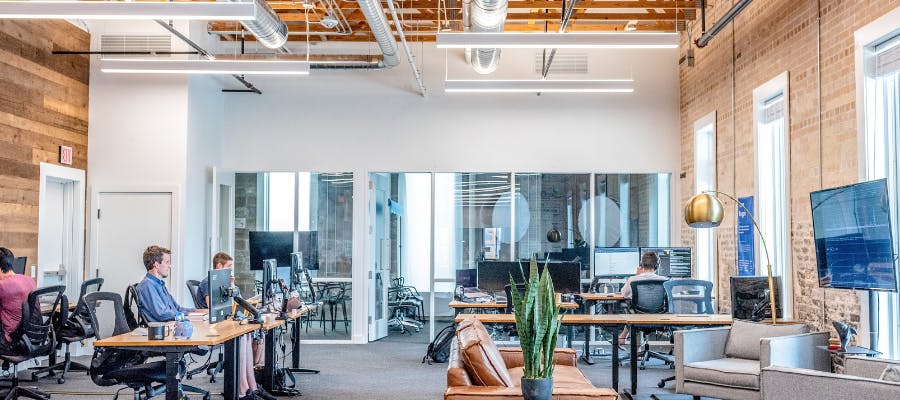First published on Tuesday, September 15, 2020
Last updated on Thursday, April 29, 2021
Supporting staff back into the workplace
Now that the Job Retention Scheme (JRS) is winding down, lots of employers are starting to bring staff off furlough and back into the workplace. But the workplace looks different than it did before COVID-19.
Floor markings for social distancing. Hand sanitising stations. One-way systems. We keep hearing the term “the new normal”—but there’s nothing normal about all these new measures.
And not only do your staff need to know about these new H&S measures to prevent the spread of the virus, but to help them feel comfortable coming into this new environment. As all these changes could, understandably, make them feel a bit intimidated or anxious—and not wanting to come back to into work at all…
What should employers do?
The government states that employers should hold a ‘meaningful consultation’ with any employees returning to the workplace. Translation?
You need to talk to your staff.
Set up a one-to-one meeting with any staff you’re bringing off furlough. This is your opportunity to discuss all the changes to the workplace, show your staff your workplace is COVID-secure, and address any concerns they might have about coming back to work.
Areas to consider in your meeting
- When your employee might return to work.
- Your employee’s use of public transport.
- How health & safety is being reviewed and managed.
- Sharing your COVID-19 risk assessment results.
- Workplace adjustments, such as additional hand washing facilities, one-way systems, staggered start and finish times, floor markings, hand sanitising stations etc.
- If there will be a phased return of the workforce.
- Arrangements for flexible working and working from home.
- New policies and procedures (for example, what will happen if a staff member has symptoms of coronavirus).
What if an employee doesn’t want to come back to work?
Hopefully your meeting will reassure staff that you’ve taken every measure to make your workplace as safe as possible. But in the current climate some staff might still worry about returning to work.
People might not want to come back because they’re worried about catching coronavirus, at high risk of getting a severe illness if they catch coronavirus, caring for children or living with someone who is vulnerable or who had been advised to shield.
Practical steps you can take
As an employer, you should listen carefully to any concerns staff may have and take the necessary steps to further protect your people where possible. For example, you could:
- offer extra car parking so people can avoid using public transport,
- supply masks for journeys for people who have to get public transport,
- amend employees’ working hours so they can avoid travelling during peak times.
What if they still don’t want to come back?
If an employee still doesn’t want to return to work, you might be able to arrange for them to work from home during the current situation. If that’s not possible, your employee could take the time off as holiday or unpaid leave.
However, this isn’t a long-term solution. If any employee refuses to return to work despite you proving that you’ve made your workplace COVID-secure, you could take disciplinary action against them—but this should always be a last resort.
Instead, you should try to help ease anxieties in any way that you can. Employee assistance programmes like Bright Wellbeing and Counselling support staff with any mental or physical health problems they may have. To find out more, speak to one of our friendly advisors today on 0800 470 2432.






